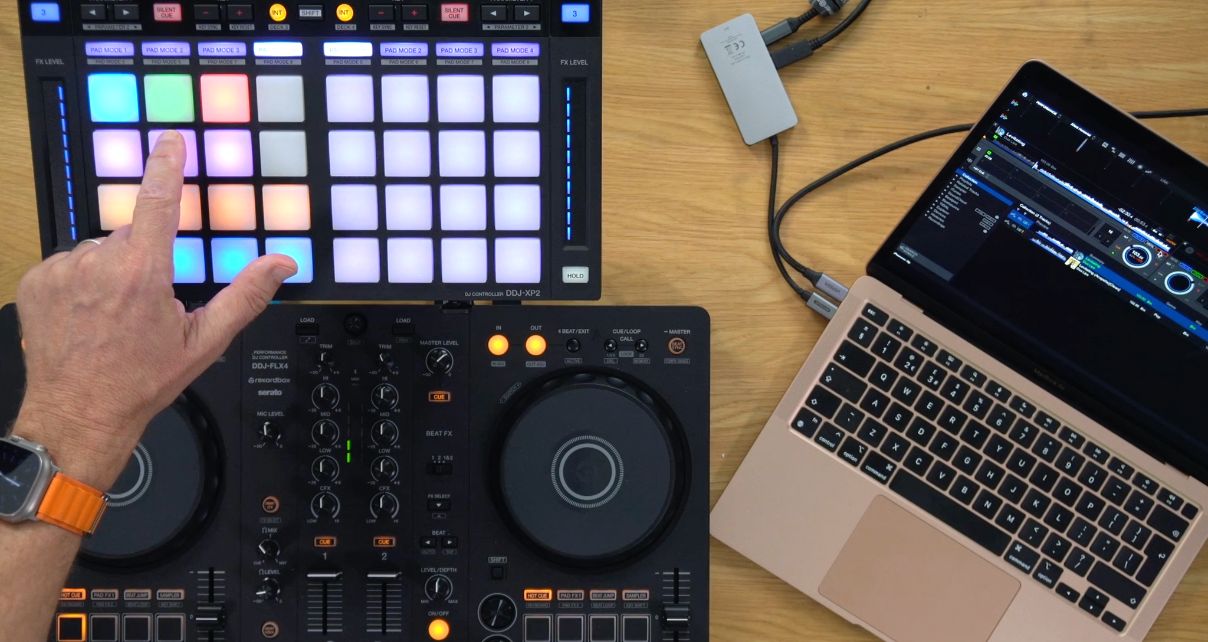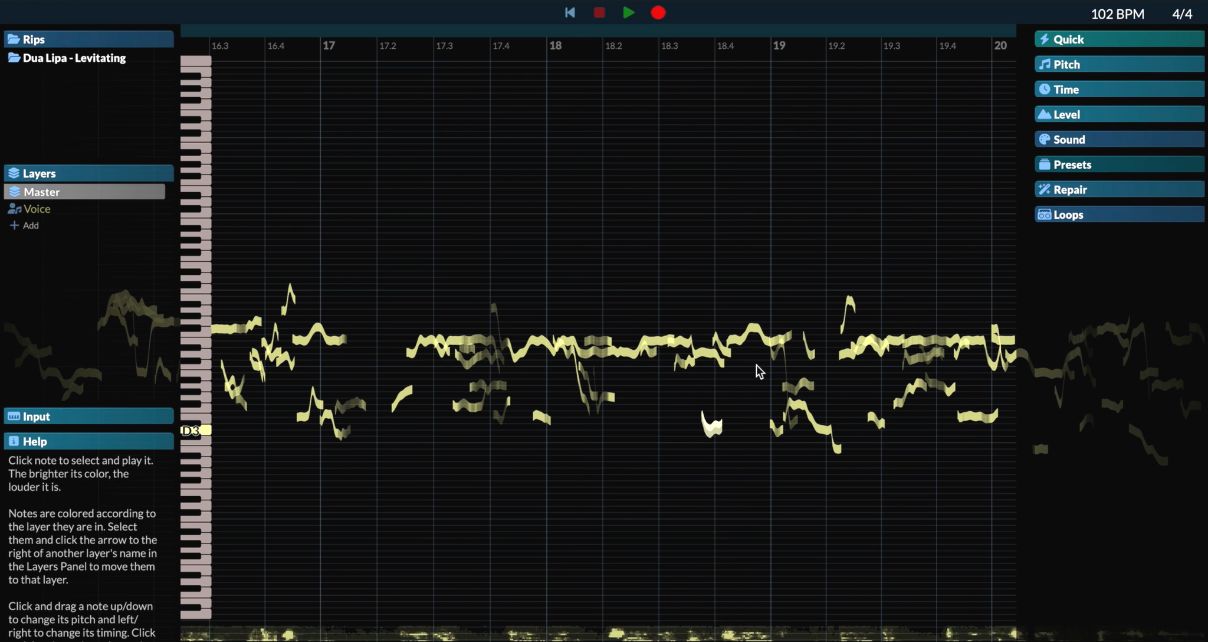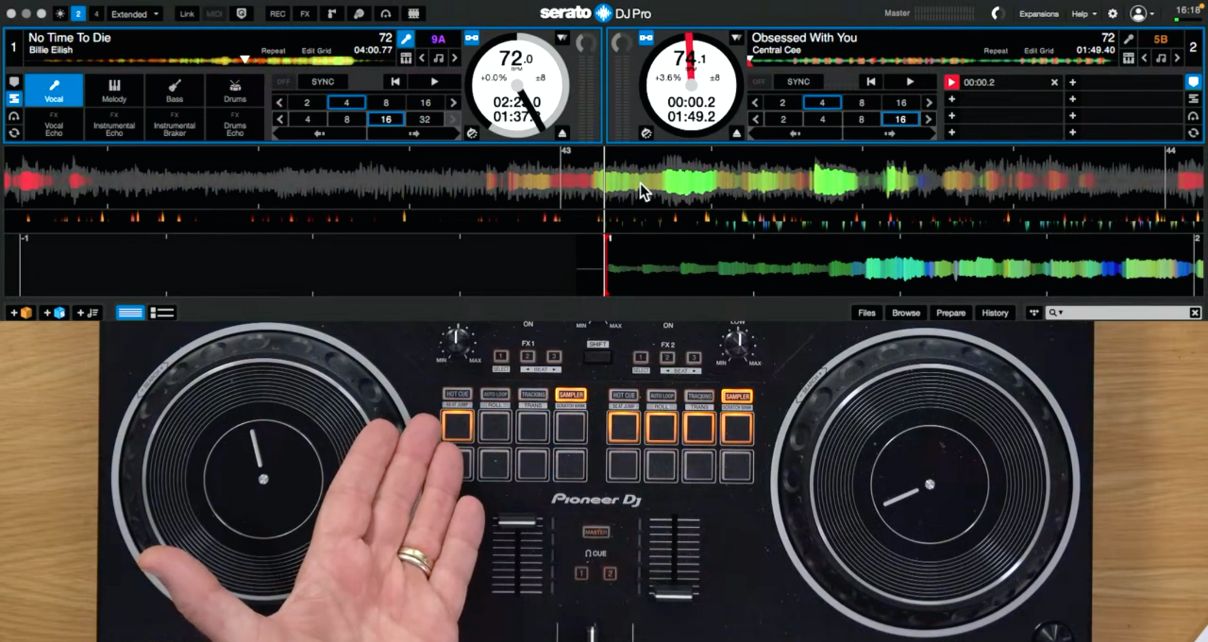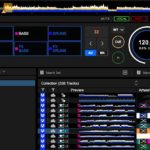The latest thing in DJ software tech is real-time stems – the ability to separate vocals, instruments and drums in real time as you DJ, for new ways to play. Some DJs have embraced it, others are hesitant.
But even though the sound quality of stems can be rough, and even though they put demands on your laptop that may make it creak, we’re here today to say: don’t ignore them! This is actually the biggest tech to hit DJing since keymixing, and it is not going away!
In this live show replay, we discuss what stems are, why and how DJs should use them, and explain three big reasons why even for the hesitant, they’re a total game-changer.
Here’s what’s covered:
- 0:00 Intro
- 2:50 What exactly are “stems”?
- 3:35 Why DJs NEED to use stems
- 4:12 Stems sound quality
- 5:08 How to get every acapella in the world
- 5:48 Ultimate Vocal Remover
- 8:58 Extracting song parts
- 7:21 RipX DAW
- 9:08 Instant creative experimentation
- 11:56 How to beatgrid “beat-less” music
- 13:14 The two benefits of Real-Time Stems DJing
- 22:08 The big picture & how to stay ahead
- 24:24 How To Mix With Acapellas (& Stems) – course sneak peek!
- 42:50 What this means for the art of DJing
Lesson Notes
Among many of our students and subscribers there is (maybe surprisingly) a lot of resistance to the new technology of stems in DJ software.
To recap, stems features let you separate in real time the vocals, instruments, sometimes bassline and always drums, however you wish, meaning that you can have instant acapellas, instant instrumentals and so on.
The technology that drives this is absolutely incredible, make no mistake about it. But when technology is moving fast, as it is at the moment in this area, it can be tempting to ignore it. After all, being an early adopter is risky. In this instance, the sound quality is sometimes not very good, it puts a lot of demands on your computer, it can make your software sluggish and so on.

But the problem with not playing with new technology when things are moving fast is that when things mature and slow down, those who haven’t dabbled end up being left behind, and it becomes even harder to get on board.
I think also with DJing there’s something about the concept of purity – the idea that there’s one right way to do it – and of course new technology that offers shortcuts and tools like this can often be seen as somehow sullying the good name of the culture of DJing (something that we have never subscribed to – after all it’s what comes out of the speakers that matters).
So if you are dabbling with the idea of stems but don’t know where to start, let me give you a few ideas.
4 simple ways into the world of stems DJing
1. Prepare acapellas ahead of time
The first one is to forget the stems in your DJ software and just use freely available open source software that lets you separate, let’s say, the vocals from everything else in a song. We talk about a couple of these pieces of software in the video above – try Ultimate Vocal Remover for starters.
The advantage of doing it ahead of time is that the quality is better. Most DJs are used to the idea of having acapellas in their collection – now you can have any acapella of any song you want, which let’s face it is a dream come true for a lot of DJs. So if you only ever use this technology for that, there’s an “in point” for you.
Learn to DJ with acapellas and stems the RIGHT way
Using acapellas and stems is one of the best ways to stand out and show off your skills as a DJ. Learn how it’s done properly with the upcoming Digital DJ Tips course, “Mixing With Acapellas & Stems” – Click here to find out more.
2. Experiment with instant acapellas in your DJ software
Now if having any acapella you ever want at your fingertips suddenly sounds promising, of course now you can also do that in your DJ software using this technology. Just turn off everything that isn’t the vocal on a track! The advantage of doing this is that you have an instant beatgrid over the top of that acapella.
We know from our students that beatgridding acapellas is one of the things that they sometimes struggle with. It’s something we cover in our acapellas and stems mixing course in some detail for this very reason.
However, when you’re just experimenting and trying to figure out if an acapella might work in your DJ set – by just soloing the vocal using the real-time stems feature, you can not only test it out but also keep it in time really easily.

Now, if you end up liking the acapella, you can always go away and use some of the external software to rip a really good quality version of it. And once you’ve done these things, maybe your resistance to the whole idea of real-time stems will be somewhat softened.
Read this next: Acapella & Stems – Prepare First, Or Use Real-Time Features?
And so now let me give you two things that you can do to start to dabble in using them how they were intended – which is turning on and off elements of songs as you’re DJing…
3. Use them to fix ropey beatmixes
So the first one is a simple way of saving face when you are beatmixing and it’s going a little bit wrong. Now, I’m not talking about it “going wrong” as in the beats are not locked, because there’s no excuse for that nowadays – sync functions and so on make it very easy to lock the beats.
No, what I’m talking about is when you have music clashing in two tracks. In other words, the instruments or the voices are conflicting with each other. Maybe they’re off key, maybe you’ve got two singers singing something at the same time, whatever.
If this happened in a beatmix in the past, your only option really was to stop one of the tracks or to try and do something with the EQ to hide what’s going wrong. However with stems, you can simply turn off the vocals and/or the music on one of the tracks that’s offending, and that way solve your problem while the beatmix continues.
It’s a really, really cool trick and it would just make you sound better.
4. Make instant acapella in/out mixes
The second suggestion I have for you is to create instant acapella in or out versions of songs. This is where you turn off everything that isn’t the vocals, mix the song in, and then when the song that you mixed it into is finished or finishing, turn on everything else in the new song too.
Overlapping a few vocals from an incoming song or indeed an outgoing song over an incoming one is just a very unobtrusive and smooth way of mixing. If you’ve ever swapped the basslines by using the bass EQs on your DJ gear in a mix, this is just another way of doing something similar, but instead of the basslines you’re swapping the vocals over.

(Of course you could do it with the music as well, but I’m highlighting the idea of doing it with vocals here, because acapellas are one of the big things that people are interested in using in their DJ sets, generally.)
I hope the above has triggered your curiosity. I go over this in more detail in the live lesson above, where there is also lots of feedback from our students – so do go and watch that, and if you’re interested in learning more come and take a look at our How To Mix With Acapellas (& Stems) course.
Enjoy the lesson.






